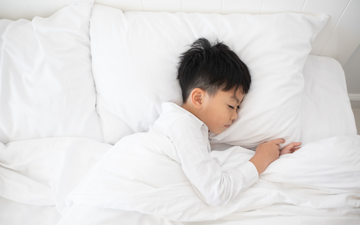What is Bedwetting?
Most young children grow out of bedwetting by the age of five, but there is a significant percentage of children who will go on to wet the bed for several years beyond that. A small portion of children will continue to wet the bed up until their teen years. This is known as nocturnal enuresis.
Prolonged bedwetting has exasperated many parents who think their child might be too lazy to get out of bed at night, or who worry that wetting the bed is a sign of some kind of emotional or mental trauma.
Nocturnal enuresis is not uncommon. There are many possible causes, such as an underdeveloped bladder, urinary tract infection, diabetes, or a misalignment of the upper cervical spine.
Signs and Symptoms of Bedwetting
The most obvious sign of bedwetting is a child waking up with soiled pajamas and bedding. This is something many children will experience as isolated incidents that may have a variety of causes, but it is considered nocturnal enuresis when it occurs at least two nights per week.
Children who suffer from nocturnal enuresis may also experience painful urination, excess thirst, snoring, hard stools, or urine tinged with pink or red.
In addition, children with nocturnal enuresis may also suffer from anxiety and embarrassment over the condition, particularly as they get older.
How Bedwetting Is Affected by the Upper Cervical Spine
The brain sends signals through the body to control the bladder, telling it when to hold and when to release urine. If these signals are disrupted, it could result in nocturnal enuresis.
The upper cervical spine consists of the uppermost seven vertebrae, which begin at the base of the skull right where the brain stem connects to the spinal cord. These vertebrae are particularly vulnerable; they can slip out of alignment from rough play, poor posture, or even when a baby is going through the birth canal.
When the vertebrae in the upper cervical spine are misaligned, it may cause pinched nerves or nerve compression that interferes with the brain’s signals to the bladder.
How Our Bedwetting Treatment Works
Dr. Christina Coblish and Dr. Ryan Moeskau of Upper Cervical Chiropractic of Boulder are upper cervical specialists who can help children with bedwetting problems. Dr. Coblish and Dr. Moeskau are practitioners of the Blair Chiropractic Technique, a modern, gentle chiropractic technique that is well-suited for treating children.
The Blair technique is gentle, safe, and effective. Unlike traditional chiropractic methods, it does not involve sharp jerks or jarring twists. Instead, with the Blair techniques, doctors use state-of-the-art 3D diagnostic imaging scans to examine the anatomy and pinpoint any problems. These scans allow for more precise corrections that utilize a gentler touch.
If your child is still wetting the bed, contact Dr. Coblish and Dr. Moeskau to see how they can help. Areas of coverage include Boulder, Longmont, Louisville, Erie, Lafayette, Broomfield, and Denver in Colorado.


